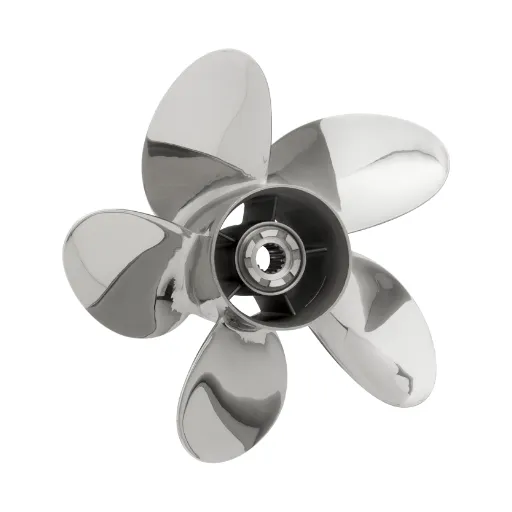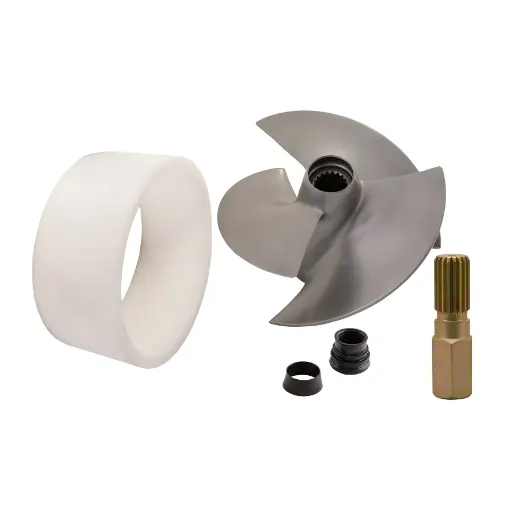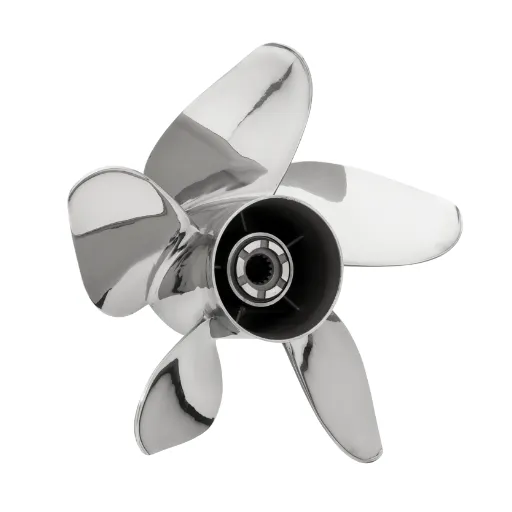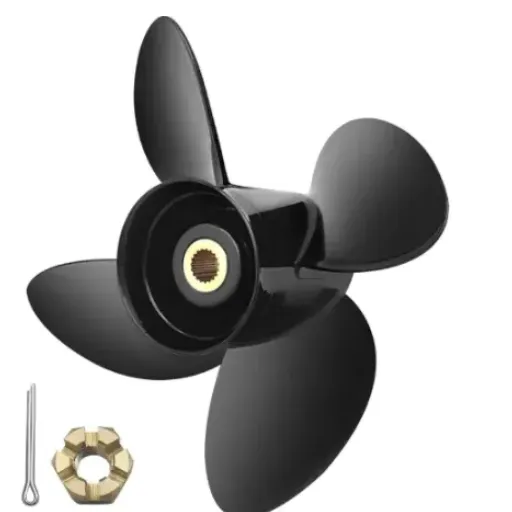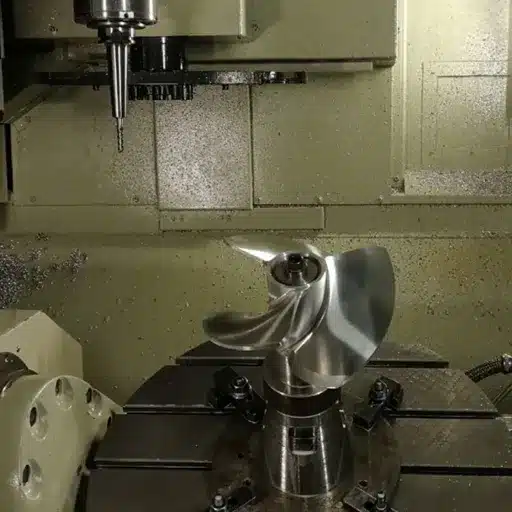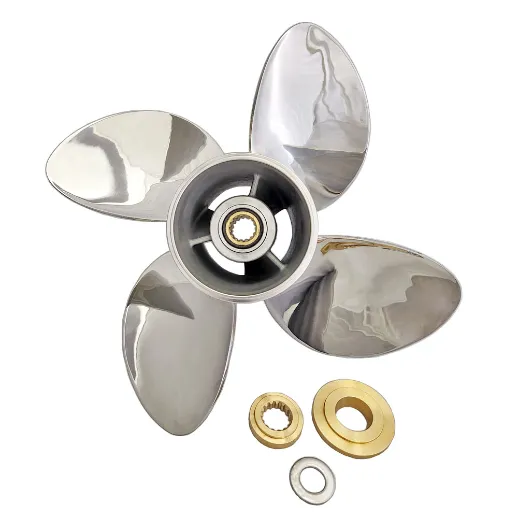The performance of your boat depends in large part on the propeller you choose. Among the various propellers available, Yamaha outboard motor propellers are regarded for their reliability, efficiency, and contribution to an overall good boating experience. However, the wide variety of choices can leave you wondering which one is ideal for your boat and the activities you will undertake. Let us make things easy for you with this guide. Whether you are a fisher, a watersports person, or just a cruiser, we will explain the main factors to consider and how to select the right Yamaha propeller for your needs. Be prepared to get the most out of your boat!
Understanding Outboard Propellers
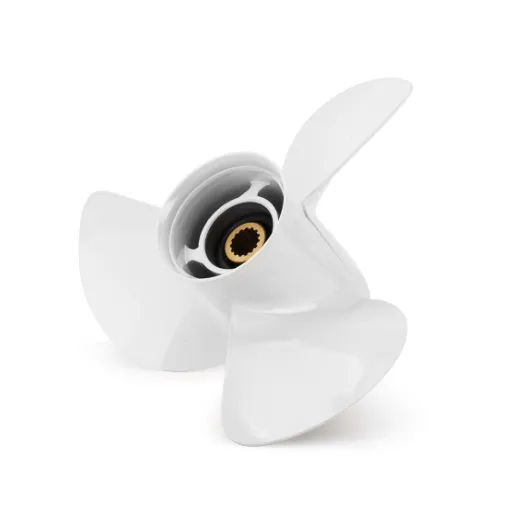
What is an Outboard Propeller?
An outboard propeller is an essential part of an outboard motor, turning the power of the engine into the thrust that either moves the boat forward or backward in the water. It is made up of a hub that has blades around it, which are shaped in a certain way so that they can not only move water but also create motion with great efficiency. The right size and shape of the propeller have a direct effect over the speed of the boat, the consumption of fuel, the performance in general and other factors as well.
There are different types of propellers depending on the material, number of blades, pitch and diameter, which collectively determine the extent of the power of each propeller. The most common materials are aluminum and stainless steel, with aluminum being the cheapest option and stainless steel being the ultimate material for high-speed watercraft due to its combination of resistance and performance. The pitch refers to the distance the propeller travels in one complete rotation while the diameter indicates the thickness of the circle crossed by the blades of the propeller; both parameters affect acceleration, maximum speed and the ability to handle the load.
Choosing the correct propeller is based on your water activities and engine data. A perfectly matched propeller guarantees best performance and the lowest fuel consumption, while the wrong selection could have the opposite effect and put extra stress on your motor. These basic things explained will guide you to the right choice of the outboard propeller that would be best suited to your needs and thus enhance the enjoyment of your time on the water.
Key Components of Yamaha Outboard Propellers
Grasping the main elements of Yamaha outboard propellers is essential if you want to have the best performance and efficiency on the water. Among the most important factors are the blade geometry which consists of the shape, size, and number of blades. The blade geometry has an influence on monster aquaplaning, the top speed, and the handling, thus allowing for customization of the performance according to the specific boating activities like fishing or water sports.
The pitch is another significant factor, which measures the distance that the propeller would cover in one full revolution theoretically, if there was no slippage. A lower pitch gives faster acceleration but comes with a limit to the top speed, while a higher pitch allows for higher speed at the expense of slower acceleration. Thus, picking the right pitch is contingent upon the power of your boat’s engine and the purpose for which it is to be used.
The material of the propeller, however, is the last element, yet it plays a significant role in performance and longevity. Yamaha outboard propellers are manufactured from aluminum or stainless steel mostly. The aluminum propellers are easy on the pocket, light, and perfect for recreational boating. On the contrary, the stainless steel propellers are the ones that offer the best possible performance and are the most durable when it comes to tough conditions. Thus, selecting the proper material will give you a long-lasting and reliable boating experience.
How Propeller Design Affects Performance
Designing propellers is very significant since they affect the speed, fuel consumption, and overall maneuverability of a vessel. The number of blades is one of the primary factors to consider. Generally, with fewer blades, such as in a three-blade propeller, one can expect to have a higher maximum speed and better efficiency whereas, on the contrary, with four or five blades, the propellers provide quicker start-up and smoother operation particularly in the case of choppy waters.
The pitch of the propeller is another important element, and it refers to the distance that the propeller moves through the water during a full turn. A propeller with a high pitch is suited for high speeds, but it also drains more power from the engine. On the other hand, a propeller with a low pitch provides faster starting and is more appropriate for pulling like in the case of watersports. The right pitch choice guarantees that the engine works in its most conducive range using power effectively.
The diameter or the total size of the propeller also affects performance. More thrust is often the result of larger diameters and that is why they are recommended for heavy boats or slow speeds. On the other hand, smaller diameters are used for faster and lighter boats. The integration of these features makes it possible for the propeller to come in line with the boat’s intended use, thus improving performance and giving a better boating experience.
Types of Yamaha Boat Props Available
Aluminum vs. Stainless Steel Propellers
Aluminum propellers are featherlight and economical, but opposite to them the performance benefits and longevity along with better fuel efficiency come with stainless steel propellers.
| Key Point | Aluminum | Stainless Steel |
|---|---|---|
| Weight | Lightweight | Heavier |
| Durability | Moderate | High |
| Performance | Basic | High |
| Cost | Low | High |
| Flexibility | More | Less |
| Use Case | Recreational | Offshore/High Perf. |
Different Pitch Options for Yamaha Propellers
Choosing the right pitch for your Yamaha boat propeller is very important for performance, fuel efficiency, and overall handling to be at their best. Propeller pitch is the distance a propeller would theoretically move through the water in one rotation if it were measured in inches. Yamaha provides choices for pitch that cover the whole range from the lower pitches (for example, 9 or 10 inches) to the higher ones (like 23 or 24 inches), thus meeting different boating requirements.
Low-pitch propellers are perfect for boats that need more power to accelerate and pull things along, such as those engaged in water skiing or pulling floats. They give out more torque but also decrease the maximum speeds. In contrast, high-pitch propellers allow for faster speeds which are good for light or performance-oriented boats. Yet, the low-end power might be lost.
Moreover, Yamaha’s latest designs have brought advanced engineering to the table for better efficiency, such as the use of progressive pitch changes in some models. It is very important to have your propeller pitch that corresponds with the engine’s recommended RPM range. Regular testing and adjustments can help ensure that both propeller and engine systems perform their best and last long.
Specialty Propellers for Specific Applications
Specialty propellers are characterized by a design that is highly specific to the boat’s needs, and they optimize performance of that application. One example is the high-thrust propellers that can be used in the case of pontoons, sailboats, or any vessels that require potent maneuverability at a slow speed. The thrust in these conditions is enhanced by the larger diameters and more aggressive blade designs that are typical of these types of propellers. Meanwhile, the performance propellers made of stainless steel are intended for the speedboats and high-speed activities that require superior durability and handling under extreme conditions.
For water sports activities like wakeboarding or water-skiing, a low-pitched propeller is typically the one that is used due to its fast acceleration and high pulling power traits. In contrast, the fishing boats operating far out in the ocean can enjoy the performance of propellers specifically designed for fuel efficiency and long-range travel, which means that the boats can be relied upon even in the case of prolonged fishing expeditions.
The use of advanced technologies such as four- or five-blade propellers has the potential to refresh the market through the benefits of better stability, less noise, and higher efficiency in the case of rough waters. Moreover, some propellers are equipped with cutting-edge technology like variable pitch or anti-ventilation systems, which help to tackle the common problems like cavitation or fuel wastage. When you choose the right specialty propeller, you not only improve your boat’s performance but also increase your overall enjoyment during watersports activities.
Choosing the Right Outboard Prop for Your Engine
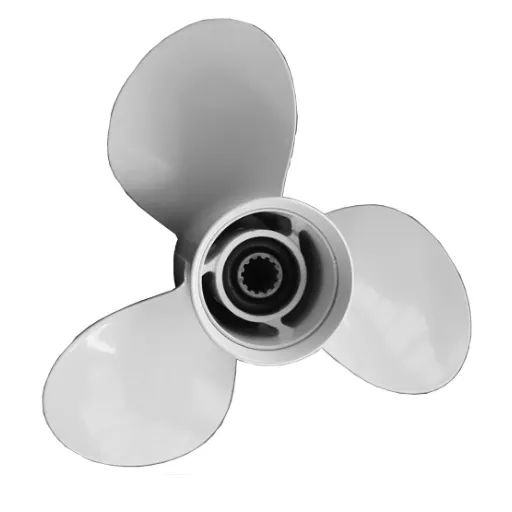
Matching Propeller Size with Your Yamaha Outboard
When I need to decide on the right propeller size for my Yamaha outboard, I first think about two main factors—diameter and pitch. The diameter is the size of the circle that the propeller traces as it turns, and the pitch is the distance the propeller goes forward in one full turn. These two measurements have to be compatible with not only your engine’s specifications but also your boating goals in order to achieve the best performance.
I also consider the manufacturer’s suggested RPM range for my particular Yamaha engine model, as running outside this range can result in ineffectiveness and even cause engine harm. A prop with too high a pitch might cause a drop in RPMs, while one with too low a pitch might cause the engine to rev too high. Thus, it is very important to coordinate these factors for smooth and dependable operation.
In the end, I consider what I usually do when boating and the kind of weather I normally encounter. For example, if I often have to carry a lot of weight or pull something, I might go for a prop with a lower pitch that gives me more thrust. On the other hand, for faster speeds under light conditions, a prop with a higher pitch would help maximize efficiency. Hence, together with Yamaha’s propeller recommendations, I am able to perfect my choice so that I have a seamless and enjoyable time on the water.
How to Test Propeller Performance on Water
Testing propeller performance on water involves a rigorous process to collect and analyze data that is reliable and at the same time ensuring the propeller’s functionality is at its peak. The first step is to find a testing location which is a large stretch of calm water that is devoid of heavy boat traffic and thus safe for the tests and accurate results. The next step which is the recording of the key baseline data points comes right after; this includes the current propeller size, its pitch and type of material, the weight of the boat, and the engine RPM (revolutions per minute) and speed at full throttle (WOT). These data will serve the purpose of comparison.
Subsequently, the on-water tests will be carried out by increasing the throttle slowly until the boat’s respective acceleration and stability are seen. The boat’s planing, the fuel consumption at different throttle levels, and the propeller’s ability to endure different situations like turns or choppy water must be monitored very carefully. Data must be recorded including maximum speed, engine RPM, and fuel consumption at various points to discover any variations or weaknesses in performance.
The comparison of the test results with the manufacturer’s specifications and user feedback available online may give valuable insights. Stick to reliable sources providing practical data and refraining from generic or too broad search results. The outcomes established from merging these data sources with the carefully gathered experimental data will allow you to decide whether the current propeller configuration is up to par in terms of performance or if there is a need for modification to propel the boat quicker, consume less fuel and have better overall water handling.
Where to Find Yamaha Outboard Motor Propellers for Sale
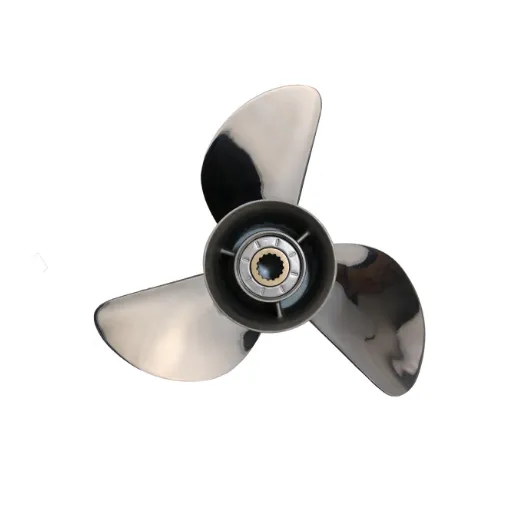
Buying New vs. Used Propellers
The procurement of new propellers contributes not only to the performance of the ship and reliability but also to the maintenance costs thereof. Used propellers tend to be cost-effective, but this calls for inspection and repairs.
| Key Point | New | Used |
|---|---|---|
| Cost | High | Low |
| Condition | Perfect | Varies |
| Performance | Optimal | May Vary |
| Reliability | High | Moderate |
| Inspection | Not Needed | Essential |
| Use Case | Long-Term | Short-Term/Backup |
Checking for Warranty and Return Policies
For propeller purchases, especially when it comes to new, one of the most important things to check is the warranty policy of the product. The warranty gives the customer confidence and also serves as a fallback in case of production flaws or problems with the product’s performance. Warranties are mostly offered by credible manufacturers, ranging from a specified time or condition of usage coverage for the propeller. It is necessary to read the warranty carefully, paying attention to what is included, how long it lasts, and what is excluded. For example, in some cases, the warranties might cover only the claims based on the defects of workmanship and might exclude the damage caused by improper usage, normal wear, and tear.
The return and refund policies are at least as important as the warranties, if not more, especially when you want to return the propeller, and you have bought it online or from a supplier in another location. A clear and accommodating return policy means that you can send back the product or swap it if it is not what you expected or it is not suitable for your machine. When it comes to return policies, look out for the period that is allocated for returns, if the shipping costs for sending back the product are taken care of, and if there is a charge for restocking. A company’s confidence in their product, as well as their commitment to customer satisfaction, is communicated by their unveiling of return policies.
On the other hand, if you are thinking about getting a used propeller, then warranties and return policies become very vital. The availability of warranties for pre-owned items can be scarce, hence you might have to depend solely on return policies or third-party examinations before making a purchase. It is advisable for potential buyers to find out if the vendor provides any kind of guarantee or limited warranty for the second-hand propeller and to stay away from sales where such protections are completely lacking. Ultimately, a combination of warranty and return policy reviews with conscientious product inspection guarantees a secure and trustworthy purchase that caters to your requirements.
Maintenance Tips for Your Yamaha Outboard Propeller
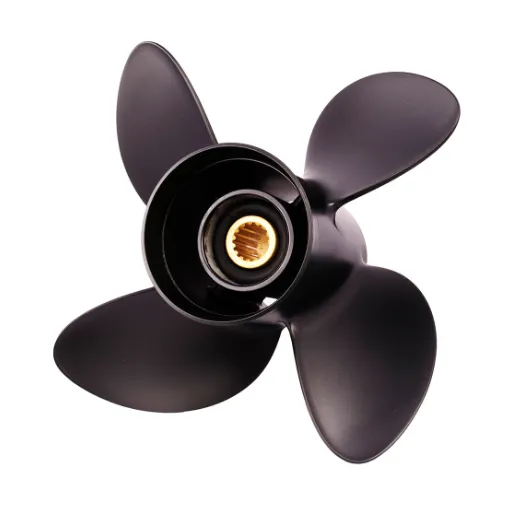
Regular Inspection and Cleaning
Regular inspection and cleaning are the first steps to keeping your Yamaha outboard propeller in excellent condition. A visual examination of the propeller for any damage, such as dings, cracks, or bends, should be the first step. The performance of the propeller can be affected even by small flaws, thus making it less efficient and causing more fuel to be consumed. Maintaining a regular checking schedule for the propeller ensures that any damage is dealt with early, thus saving the issues from escalating and affecting the outboard motor.
Another part of the maintenance process is cleaning the propeller. At the end of each trip, you should take out any rubbish like fishing lines, seaweed, or other things that might get caught around the propeller shaft. Not doing this will lead to the engine being overworked and the sealings perhaps being damaged. If your operation is in saltwater, that is very likely; rinse the propeller very well with fresh water to get rid of salt, dirt, and other residues. This practice prolongs the life of your propeller and keeps it running smoothly as it is corrosion-free.
On top of that, see to it that nothing is blocking the hub area of the propeller. The presence of dirt, foreign objects, or any obstruction can cause the propeller to rotate unevenly, resulting in vibration and less efficient propulsion. A marine-grade lubricant applied periodically to the spline shaft can be beneficial to both rust prevention and a tight fit. Combining thorough inspections with frequent cleaning not only enhances the longevity of your Yamaha outboard propeller but also keeps the performance at its peak on the water. Regular maintenance not only safeguards your investment but also adds to the pleasure of your boating experience.
Reconditioning vs. Replacement of Propellers
Propeller reconditioning is economical for slight damages, on the other hand, replacement is the only option for serious damages or props that have completed their lifespan.
| Key Point | Reconditioning | Replacement |
|---|---|---|
| Cost | Low | High |
| Damage | Minor | Severe |
| Lifespan | Extends | New |
| Use Case | Budget | Long-Term |
| Material | Aluminum | Any |
| Time | Short | Longer |
How to Spot Damage and Wear
Detecting damage and wear on your propeller is a very necessary part of maintaining optimal performance as well as ensuring a safe vessel. The first step in visual inspection is to spot the potential issues. Look at the blades first for any visible cracks, chips, or bends. Even the smallest imperfections can cause the propeller to be out of balance, which in turn will result in excessive vibration and power loss when it comes to engine operation. Moreover, look for signs of corrosion especially on aluminum propellers since it may take a toll on the propeller’s endurance eventually.
A change in performance is another very important sign of damage. If you are seeing that your boat is going slower or it takes longer to respond, fuel consumption has gone up or reaching the boat’s designated RPM range is becoming difficult, this means there is something wrong under the surface of the propeller. The cause of these symptoms could be the deformation of the blades, misalignment, or even accumulation of marine growth on the propeller surface. Changes in performance, no matter how small, should not go unnoticed because they might worsen existing damage and result in more expensive repairs.
The last aspect of the propeller’s health is physical testing, which includes checking for the right rotation and shaft alignment, providing deeper insight into wear and fit. A loose or improperly seated propeller will add stress to the drive system and cause more wear. The combination of regular maintenance programs and accurate measurement tools such as calipers to check blade geometry is a guarantee of fault’s early detection. Through observing these practices and quick resolution of issues, you are able to prolong the propeller life while keeping it at the top of its operational efficiency.
References
- Outboard Systems – Job Training
This course provides foundational knowledge about Yamaha outboard systems, including propellers and their maintenance. - What Is an Outboard Motor & How Does It Work?
This article explains the anatomy of outboard motors, including the role of propellers in the system. - Outboard Engine Maintenance Technician Training
A collaboration with Yamaha Motor Corporation to train technicians on outboard engine maintenance, including propeller systems. - Marine Engine Technology
This program covers Yamaha 4-stroke outboard engines and their components, including propellers. - Propellers and Transmissions for Yamaha Outboard F350 HP
A government procurement document detailing Yamaha propellers and transmissions for specific outboard motors.




